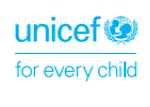
The number of people battling acute hunger and suffering from malnutrition is on the rise yet again.
In many places, we still lack the ability to collect reliable and timely data to truly know the magnitude and severity of food crises gripping vulnerable populations. And the upheaval that has been set in motion by the COVID-19 pandemic may push even more families and communities into deeper distress.
At this time of immense global challenges, from conflicts to climate shocks to economic instability, we must redouble our efforts to defeat hunger and malnutrition. This is crucial for achieving the Sustainable Development Goals and building a more stable and resilient world.
We have the tools and the know-how. What we need is political will and sustained commitment by leaders and nations. This report should be seen as a call to action and I commend its contents to a wide global audience.



















